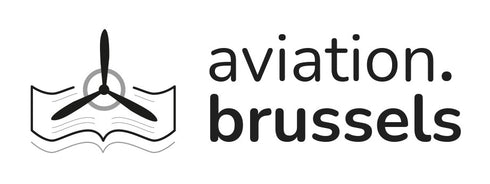Wings over Brooklands
Product image 1

Product image 2

Product image 3

Product image 4

Product image 5

Product image 6

Prix régulier 40,00 € TTC 6%
The name BROOKLANDS was synonymous with motor racing, and its fame as the firsten closed motor-racing track became worldwide. What is not so universally known, however, is that Brooklands was also the birthplace of British aviation, and has been producing world famous planes and flyers for nearly three quarters of a century.
Characteristics
| Size | 19,5 x 25,5 x 1,5 cm |
| Nbr. of pages | 157 |
|
Book cover finish |
Hardcover ( square back binding ) |
|
Special feature(s) |
Dust jacket |
| Published date |
1982 |
| Language | English |
| Condition | Very good |
| Author | Howard Johnson |
| Editor | Whittet Books |
Description
The name BROOKLANDS was synonymous with motor racing, and its fame as the firsten closed motor-racing track became worldwide. What is not so universally known, however, is that Brooklands was also the birthplace of British aviation, and has been producing world famous planes and flyers for nearly three quarters of a century. Early aviators soon discovered a magical combination of still air and a flat central area at the race track in Surrey, and many were attracted: A. V. Roe, Louis Bleriot, Colonel Sam Cody, Lord Brabazon of Tara, Tom Sopwith, Harry Hawker, Gustav Hamel, Grahame-White, Gordon Bell, Howard Pixton, Grahame Gilmour, Alcock and Brown. A. V. Roe, the great pioneer, was the first to move in to conduct his flying experiments in 1907, competing with Cody to be recognized as first in Britain to fly. Other would-be flyers, such as Monsieur Bellamy in his 'great white bird', never even took off. Roe's first flying sheds were joined by those of Martin and Handasyde, Sopwith, Vickers, and others. A flying colony grew up, with flying schools that were to teach many of the pilots of the First World War to fly. After the war, the successful team to cross the Atlantic (Alcock and Brown) originated at Brooklands, and Vickers-built planes opened up many of the world air routes we know today. During the 'thirties small planes and clubs took over, and Brooklands became the `in' place for joy-flying; businessmen came down from London in their lunch hours to learn to fly. During both world wars, the circuit was taken over for aircraft production, and remained so after the Second World War. Commencing with the Gunbus before the First World War, Vickers continued to produce military planes, including Wellesleys and Wellingtons in the Second World War. The man who helped to create them and the dambusting bombs — Barnes Wallis — worked from an office in the old Brooklands Club House. Planes to emerge from Brooklands during the second half of this century have included the Viking, Viscount, Valiant, Vanguard, TSR 2, BAC 1-11, and finally, Concorde. Brooklands is now head-quarters of British Aerospace. Howard Johnson's flying history of Brooklands is entertaining and colourful, relating many anecdotes about the personalities at Brooklands, and comical episodes such as 'Sir John' who demanded to be taken up and looped every 15 minutes, and then climbed out of the cockpit and crawled along the wing beetle-fashion.
Howard Johnson worked for thirthy-five years as a journalist on the Daily Mirror, serving as crime reporter, foreign correspondent, war correspondent, royal correspondent, and diplomatic correspondent. He retired from the Mirror to write books based on historical research.






